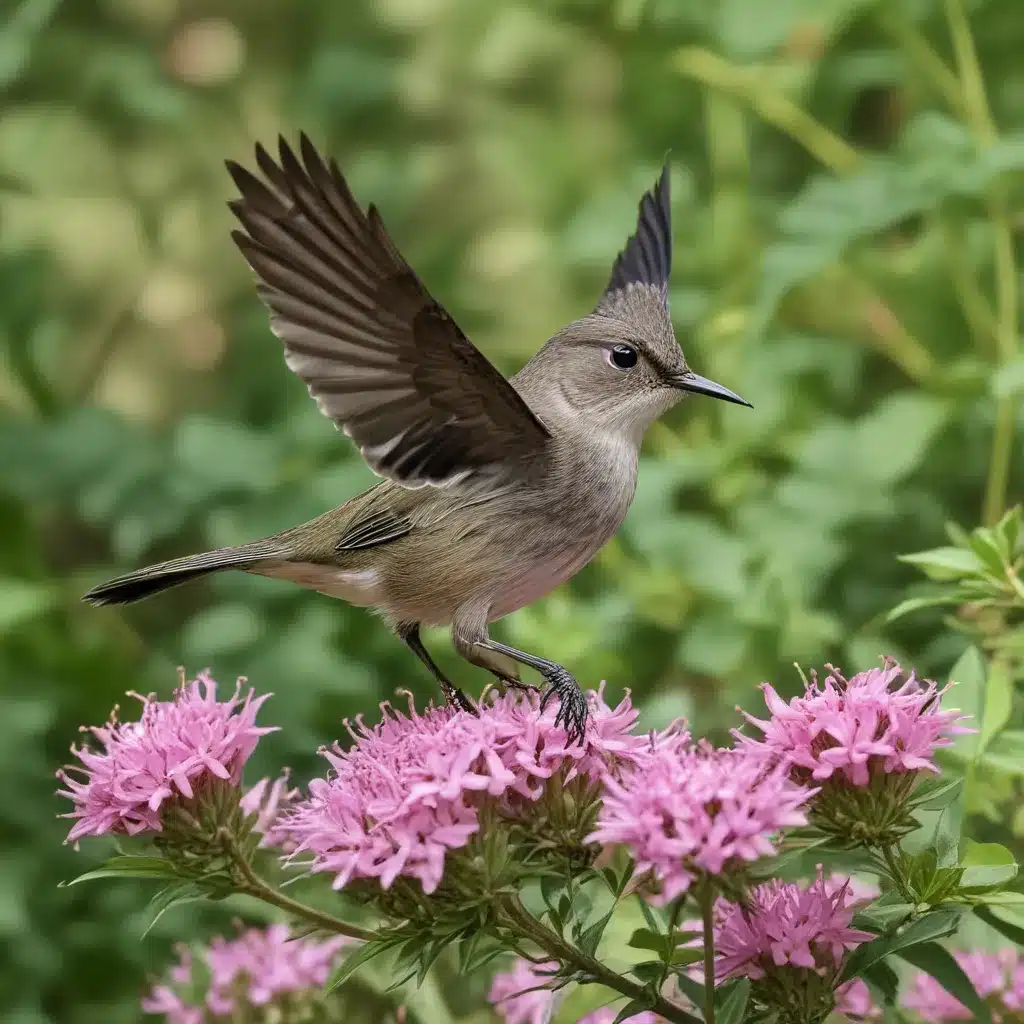
As a farm educator at Crooked Pines Farm, I’m constantly in awe of the diverse array of flora and fauna that thrive in our rural setting. From the vibrant songbirds that serenade us each morning to the mesmerizing butterflies fluttering through our pollinator gardens, the natural world offers a never-ending source of wonder and inspiration. If you’re looking to transform your own outdoor space into a thriving backyard oasis, read on to discover how you can attract these captivating creatures and create a true sanctuary for wildlife.
Backyard Habitat Design
At the heart of any successful wildlife-friendly landscape is a thoughtful approach to habitat design. By considering the needs of local species and incorporating the right mix of elements, you can cultivate an environment that supports a rich diversity of life.
Landscaping for Wildlife: Begin by evaluating your existing space and identifying opportunities to introduce more native plants. These species have evolved alongside the local fauna, offering invaluable food and shelter resources. Instead of a traditional lawn, consider replacing expanses of turf with meadow plantings, prairie grasses, and clusters of flowering perennials. This not only reduces maintenance but also creates a lush, visually striking backdrop for your wildlife visitors.
Water Sources for Avian and Insect Visitors: No backyard oasis is complete without a reliable source of water. Bird baths, small ponds, or shallow dishes filled with clean, fresh water will attract a wide variety of thirsty songbirds and beneficial insects like butterflies and dragonflies. Be sure to keep the water feature clean and replenished, as it provides a vital resource, especially during hot, dry spells.
Native Plant Selection: When it comes to selecting plants, look for species native to your regional ecosystem. These are not only low-maintenance but also provide the most value to local wildlife. Some standout options include coneflowers, bee balm, native sunflowers, milkweed, and serviceberry shrubs. By creating a diverse mix of flowering plants, trees, and shrubs, you’ll ensure a continuous source of nectar, seeds, and berries throughout the seasons.
Attracting Songbirds
Perhaps one of the most delightful aspects of cultivating a wildlife-friendly yard is the opportunity to invite a symphony of songbirds into your outdoor space. These feathered friends not only enchant us with their melodic calls but also play a vital role in maintaining a balanced ecosystem.
Ideal Nesting Environments: To welcome songbirds, consider incorporating structures that provide safe nesting sites. Birdhouses of the appropriate size and design can serve as cozy homes for species like chickadees, wrens, and bluebirds. Leaving dead trees or snags in your landscape also creates natural cavities that these birds will readily claim.
Sustainable Food Sources: Songbirds rely on a diverse array of food sources, from insects and spiders to seeds, nuts, and berries. By planting native fruiting shrubs and seed-bearing plants, you’ll ensure a steady supply of sustenance throughout the year. Supplement their diet with strategically placed bird feeders stocked with high-quality seed mixes.
Shelter and Protection: In addition to nesting sites and food, songbirds also require ample cover and shelter. Incorporate dense evergreen shrubs and thickets that offer protection from predators and the elements. Allowing leaf litter and fallen branches to accumulate in parts of your yard provides additional hiding spots and foraging opportunities.
Butterfly Gardening
Captivating butterflies are another crucial component of a vibrant backyard ecosystem. By catering to their unique needs, you can transform your outdoor space into a butterfly paradise.
Nectar-Rich Plants: Butterflies are drawn to a bountiful array of nectar-producing flowers. Choose a selection of native perennials that bloom at different times throughout the growing season, ensuring a consistent food source. Some standout options include lantana, zinnia, phlox, and butterfly bush.
Host Plants for Caterpillars: While adult butterflies feed on nectar, their larvae, known as caterpillars, require specific host plants to thrive. Milkweed is an essential host for monarch butterflies, while dill, parsley, and fennel support various swallowtail species. Incorporate a diverse selection of these plants to nurture butterflies throughout their life cycle.
Basking and Puddling Spots: Butterflies also need designated areas for basking and puddling. Create sunny, sheltered spots with flat rocks or sand where they can warm their wings and extract minerals from the soil. A shallow dish filled with moist sand or a butterfly “puddling station” will provide a much-needed source of hydration.
Seasonal Considerations
As you design your backyard oasis, it’s essential to consider the changing needs of wildlife throughout the year. Tailoring your habitat to these seasonal rhythms will ensure a continuous haven for your feathered and winged visitors.
Spring Arrivals and Nesting: As the weather warms, be on the lookout for the return of migratory songbirds. Provide nesting materials like soft fibers and abundant insect prey to support their breeding efforts. Maintain a tidy, undisturbed area for ground-nesting species.
Summer Abundance and Activity: During the peak growing season, your backyard will likely be abuzz with activity. Butterflies and hummingbirds will flit among the nectar-rich blooms, while fledgling songbirds explore their new surroundings. Keep bird baths and fountains clean and replenished to meet the increased demand for water.
Autumn Migrations and Overwintering: As summer winds down, prepare your landscape for the next wave of migrating species. Allow seed heads and dried foliage to remain, offering food and shelter for overwintering insects and birds. Plant late-blooming perennials that will sustain pollinators during their journey south.
By thoughtfully incorporating these seasonal elements, you’ll create a true oasis that supports wildlife throughout the year. Take time to observe the rhythms of your backyard habitat and make adjustments as needed. With patience and a little elbow grease, you’ll soon be rewarded with a vibrant, thriving ecosystem teeming with the sights and sounds of nature.
For more information on creating your own backyard haven, be sure to visit Crooked Pines Farm and explore our wealth of resources on farm nature exploration, educational tips for kids, gardening insights, farm-to-table recipes, DIY crafts, family fun activities, seasonal events, and farm life chronicles.


